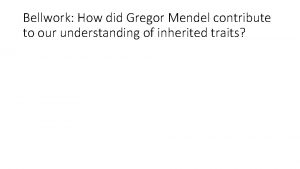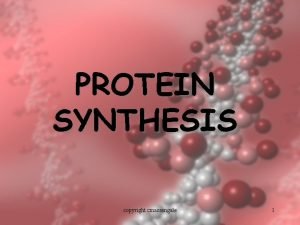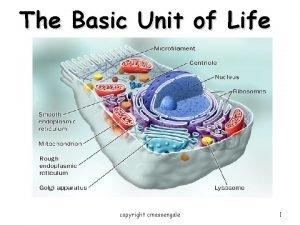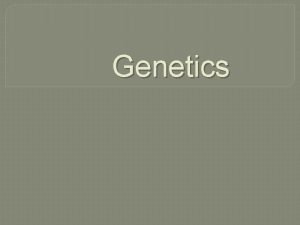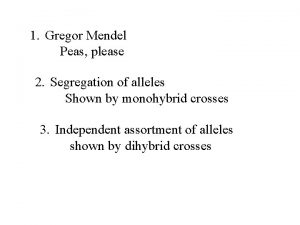Mendelelian Genetics copyright cmassengale 1 Gregor Mendel 1822














- Slides: 14

Mendelelian Genetics copyright cmassengale 1

Gregor Mendel (1822 -1884) Responsible for the Laws governing Inheritance of Traits copyright cmassengale 2

§§ § § Gregor Johann Mendel Austrian monk Studied the inheritance of traits in pea plants Developed the laws of inheritance Mendel's work was not recognized until the turn of the 20 th century copyright cmassengale 3

§ Gregor Johann Mendel Between 1856 and 1863, Mendel cultivated and tested some 28, 000 pea plants He found that the plants' offspring retained traits of the parents Called the “Father of Genetics" § § copyright cmassengale 4

Site of Gregor Mendel’s experimental garden in the Czech Republic copyright cmassengale 5

§ § § Genetic Terminology Trait - any characteristic that can be passed from parent to offspring Heredity - passing of traits from parent to offspring Genetics - study of heredity copyright cmassengale 6

Particulate Inheritance § § Mendel stated that physical traits are inherited as “particles” Mendel did not know that the “particles” were actually Chromosomes & DNA copyright cmassengale 7

copyright cmassengale 8

http: //www. youtube. com/watch? v=N 5 z. FOScowqo • Traits are created by genes, which are small sections of DNA that code for a protein. Traits result from proteins! • Genes are found on chromosomes. • Each chromosome can have thousands of genes • Sexual organisms have 2 sets ofchromosomes— one set from each parent. copyright cmassengale 9

§ § Genotypes Alleles – different forms of a gene (some dominant & some recessive) Homozygous genotype - gene combination involving 2 dominant or 2 recessive alleles (e. g. RR or rr); also called pure Heterozygous genotype - gene combination of one dominant & one recessive allele (e. g. Rr); also called hybrid § copyright cmassengale 10

§ § Designer “Genes” Dominant - stronger of two genes expressed in the hybrid; represented by a capital letter (R) Recessive - gene that shows up less often in a cross; represented by a lowercase letter (r) copyright cmassengale 11

§ § More Terminology Genotype - allele combination for a trait (e. g. RR, Rr, rr) Phenotype - the physical feature resulting from a genotype (e. g. red, white) copyright cmassengale 12

Mendelian Inheritance Each person has 2 copies of every gene—one copy from mom and a second copy from dad. These copies may come in different variations, known as alleles, that express different versions of a trait. For example, 2 alleles in the gene for freckles are inherited from mom and dad: allele from mom = has freckles (F) allele from dad = no freckles (f) child has the inherited gene pair of alleles, Ff allele from dad). (F allele from mom and f

Mendel’s Laws 1. Law of Segregation- During meiosis, the alleles for each gene separate from each other so that each gamete carries only one allele. 2. Law of Independent Assortment- Genes for different traits are inherited separately (unless located near each other on the same chromosome) 3. Law of Dominance- Some alleles are dominant while others are recessive; the dominant effect will be shown over recessive
 Pp
Pp Gregor mendel’s principles of genetics apply to
Gregor mendel’s principles of genetics apply to How did gregor mendel contribute to genetics
How did gregor mendel contribute to genetics Cmassengale
Cmassengale Cmassengale
Cmassengale Classification groups in order
Classification groups in order Chapter 11 the work of gregor mendel
Chapter 11 the work of gregor mendel Gregor johann mendel
Gregor johann mendel What did gregor mendel research
What did gregor mendel research What is the phenotype of a chicken with the genotype fbfw
What is the phenotype of a chicken with the genotype fbfw Gregor mendel referat
Gregor mendel referat Who is gregor mendel and what is he famous for
Who is gregor mendel and what is he famous for Tt x tt punnett square
Tt x tt punnett square Gregor mendel
Gregor mendel Gregor mendel chart
Gregor mendel chart


